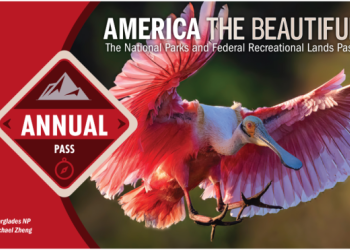Welcome to the Southern Region
The Southern Region of the Forest Service is a dynamic collection of lands that encompasses 13 states and Puerto Rico. Known as Region 8 within the Forest Service, the Southern Region consists of 14 National Forest units and two special units. The Forest Service employs about 250 people at the Region 8 headquarters in Atlanta, and nearly 2,500 throughout the South.
Find a Forest
Plan a Visit

The Southern Region comprises 13 states and Puerto Rico. Your adventure awaits, find a forest near you.
Recreation Passes

Interagency recreation passes provide access to recreation sites managed by a number of Federal agencies.
Fire Information

Find out about fire restrictions, prescribed fires, emergency information and prevention.






